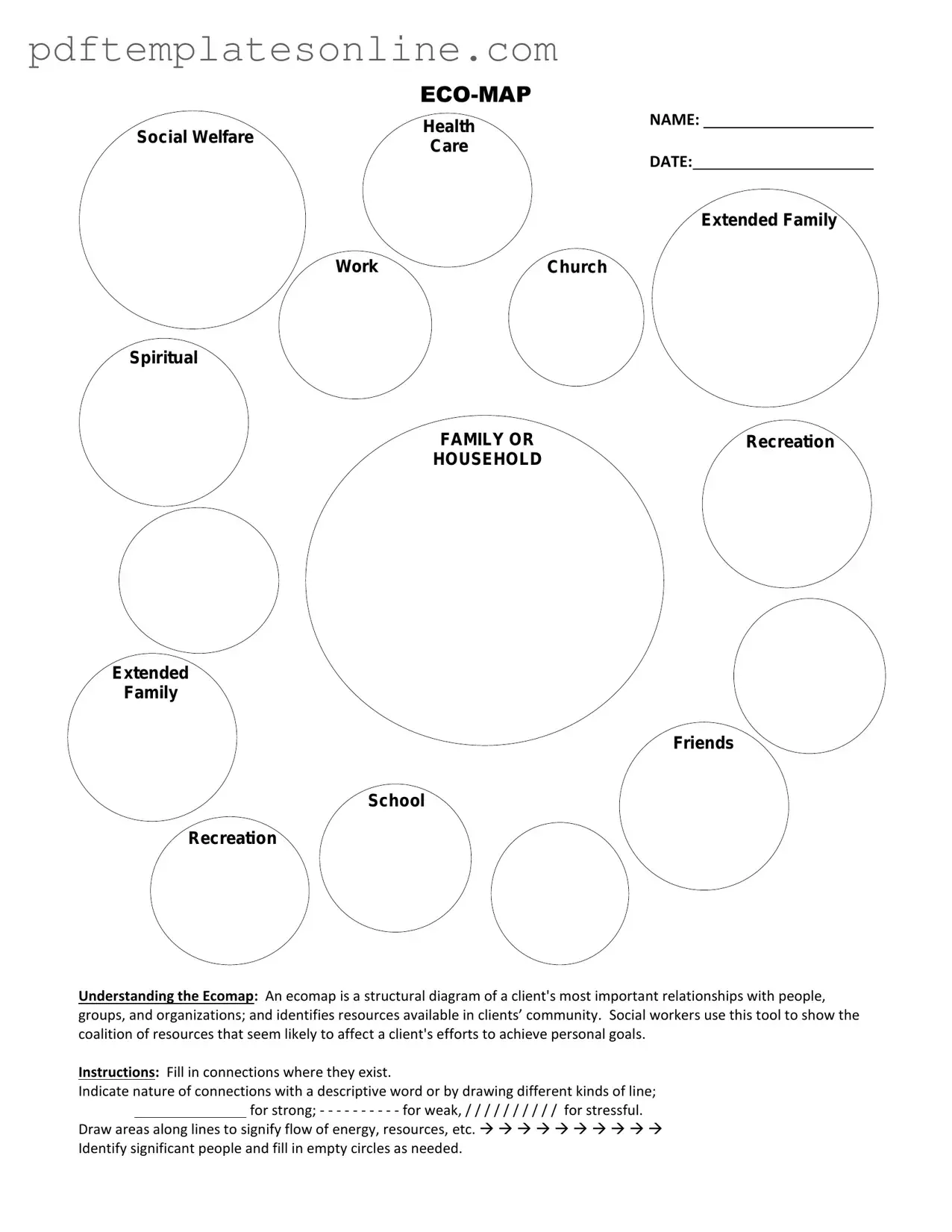Filling out an Eco Map form can be a straightforward process, but many people make common mistakes that can lead to confusion or incomplete information. One frequent error is not providing enough detail about the relationships and connections in their lives. It’s important to clearly identify who is involved and how they relate to each other. This clarity helps in understanding the support system available.
Another mistake is neglecting to update the Eco Map regularly. Relationships and circumstances change over time. Failing to reflect these changes can result in an inaccurate representation of one’s support network. Regular updates ensure that the Eco Map remains a useful tool for assessing social connections.
Some individuals also struggle with the layout of the Eco Map. They may not place individuals or groups in the correct areas, leading to confusion. For example, placing a close friend in the outer circle instead of the inner circle can misrepresent the closeness of that relationship. Proper placement is crucial for an accurate visual representation.
Additionally, people often overlook the importance of labeling connections. Simply drawing lines between individuals without clear labels can create ambiguity. Labels help explain the nature of the relationships, such as “friend,” “family,” or “co-worker.” Without these labels, the map may not convey the intended meaning.
Another common oversight is using vague terms when describing relationships. Instead of writing “good friend,” specifying “best friend from college” provides more context. This specificity can help in understanding the depth and type of support available.
Some individuals may also forget to include themselves in the Eco Map. It’s essential to represent oneself at the center of the map, as this emphasizes the individual’s perspective and experiences. Omitting oneself can lead to an incomplete understanding of one’s support system.
Moreover, people sometimes fail to consider the quality of relationships. Not all connections are equally supportive. Distinguishing between strong and weak ties can provide valuable insights. Including this information helps to assess which relationships might be most beneficial during challenging times.
Another mistake is not using the Eco Map as a reflective tool. Many fill it out quickly without taking the time to think deeply about their relationships. This reflection can reveal patterns and insights that may not be immediately obvious. Taking a moment to consider the significance of each connection can enhance the usefulness of the map.
Lastly, some individuals may be hesitant to share their Eco Map with others. While it can feel personal, sharing can lead to valuable discussions about support and connections. Engaging with trusted individuals about the Eco Map can provide new perspectives and enhance understanding of one’s social network.
